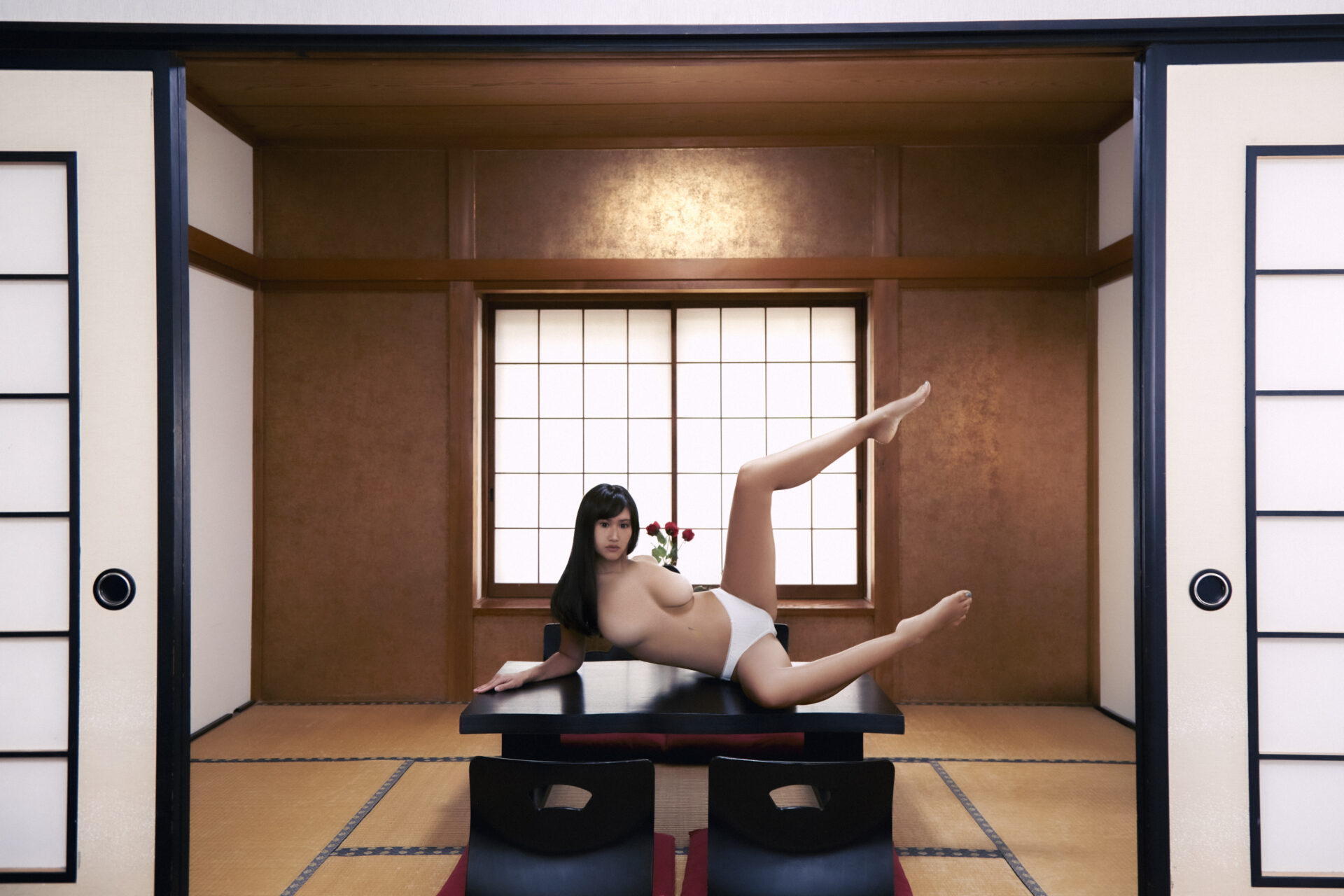Alessia Gunawan's Artificial World

From our globalised, perfection-obsessed world, Alessia Gunawan’s photography scours the tensions between reality and fantasy, the human and the non-human. Born in Jakarta and raised between the Indonesian archipelago and Europe, Gunawan’s early life fuels her exploration of forces like globalisation, technology, and popular culture. Her work, spanning fine art and fashion photography, critiques how these forces shape our perception of identity and place. Lisabel Link and Gunawan discuss these very forces in light of her recent exhibition From the Ocean to the Forest, which was on display at Sherrif Projects last October.
Alessia Gunawan and I met at a small boxy club on the outskirts of Tokyo. The room smelt of indoor smoke and sounded like experimental techno. It was a timid setting to exchange pleasantries and Instagram pages, hers of which I stalked in the late hours of the evening.
Her grid is mostly comprised of her fashion photography, including her recent cover for CR Fashion Book and features for Interlope magazine, where she photographed internet it-girl Gabbriette. Other images were more artistic and personal. One particular image of a young woman in her underwear, face illuminated, standing in flood waters intrigued me. If I squinted my eyes to a close, she seemed almost real. I then realised (after reading the image's caption) that it was indeed rendered artificially. While these AI images are stylistically aligned with her commercial photographs, they are definitely striking in their own right.
Wrestling with themes of globalisation, Gunawan's images interrogate popular cultural norms and challenge how they inform human and geographic relationships. Her exhibition, From the Ocean to the Forest, featured nine images of dolls against popular or stereotypical Japanese landscapes. The dolls elicit desire with their nudity and sensuality and tantalise us with their idealised forms, constructed to purposefully entice us to look closer and determine whether they are, in fact, real. The dolls at once reinforce existing visual tropes and subvert them.


“When I was in Japan, I was interested in this idea of romantic idolisation,” Gunawan explains from her living room in Paris. “I constantly find myself in these conversations about the enigma of love and the ideal partnership.” The doll, she says, is a blank slate—an ideal form on which we project our fantasies of the perfect partner: poised, submissive, and ready for consumption.
Japan, like many countries, is grappling with a low birth rate and shifting gender dynamics, where women are opting out of marriage and motherhood. This cultural shift has seen the market for ‘companion dolls’ grow. “Men are often choosing to engage with dolls because they’re easier than women. These dolls are accommodating and more malleable," Gunawan adds.
Dolls have long been incorporated into art. In the early 20th century, the Surrealists used dolls and mannequins to evoke a twisted sense of reality and tap into the subconscious. Countless contemporary artists, from Cindy Sherman and Stacey Leigh to Sheila Pree Bright have used dolls to explore themes of identity, gender performativity, relationships, and the human condition, imbued with meaning whether personal or socio-cultural. Gunawan notes, “Even when I was younger, I had Blyth dolls, and the collectors would take photos of them wherever they went. [For this work], I wanted to do the same thing.”


Erika Kamano, a friend and fellow photographer, became the subject, or rather the ‘doll’, of From the Ocean to the Forest. Gunawan wanted to keep the production as simple as possible, a departure from the heavily orchestrated fashion shoots she was used to, which generally included ten or more people.
Tokyo became a playground for Kamano and Gunawan. In logistical terms, their process was spontaneous, intimate, and reminiscent of their adolescent photographic beginnings. “It was so fun,” Gunawan recalls. “We went to these insane wig shops in Shibuya and bought a simple, anonymous brown-haired wig, some contact lenses, and tights to make her joints look like doll joints. She was naked in a lot of the images, and public nudity is illegal in Japan, so we had to make sure it was easy for her to change.”
The locations chosen were all designed to reflect both a specific and generic Japanese landscape, playing on the viewer’s preconceived notions of a sublime destination with a perfect, unblemished doll. Gunawan wanted viewers to question whether the doll was human. This questioning of the real and unreal, the human and non-human, is a theme that runs through much of Gunawan’s work.


As the world torpedoes into a pool of AI-generated imagery, with image banks overloading and refilling constantly, Gunawan is excited and nervous about how this technology will reshape visual culture. In her upcoming project sensorial.jpg, Gunawan is using AI to generate images of bureaucratic human spaces such as offices, waiting rooms and government buildings. Curious about how AI constructs these spaces, she will be introducing intentional glitches into the images, disrupting the technology in an attempt to almost re-humanise it. “The glitches are tricky,” she says. “The AI recovers and relearns so quickly. You try to trip it up, but it adapts.”
Before we end our call, I ask Gunawan what she thinks the future holds for AI and its impact on visual culture. She pauses before answering, “We’re going to get to a point where we’re so detached from this precious idea of what the truth is. You’ll see an image, and you won’t know if it’s real or not. It’s scary. But it’s also interesting.”
Keep my head above water
By Mahmood Fazal
The Institute of Modern Art Presents: Jenn Nkiru - REBIRTH IS NECESSARY
By Rachel Weinberg
HECTOR CLARK on ORIGINALITY and PIERCING through HOMOGENEITY
By Antonio Sebastian
Fundamental Geometries: An Interview with Moksha Richards
By Adam Hollander
Ways of Freedom: Jackson Pollock To Maria Lassing
By Billy De Luca
Artist Josh Robbins On 'Natural Abstraction'
By Riley Orange
